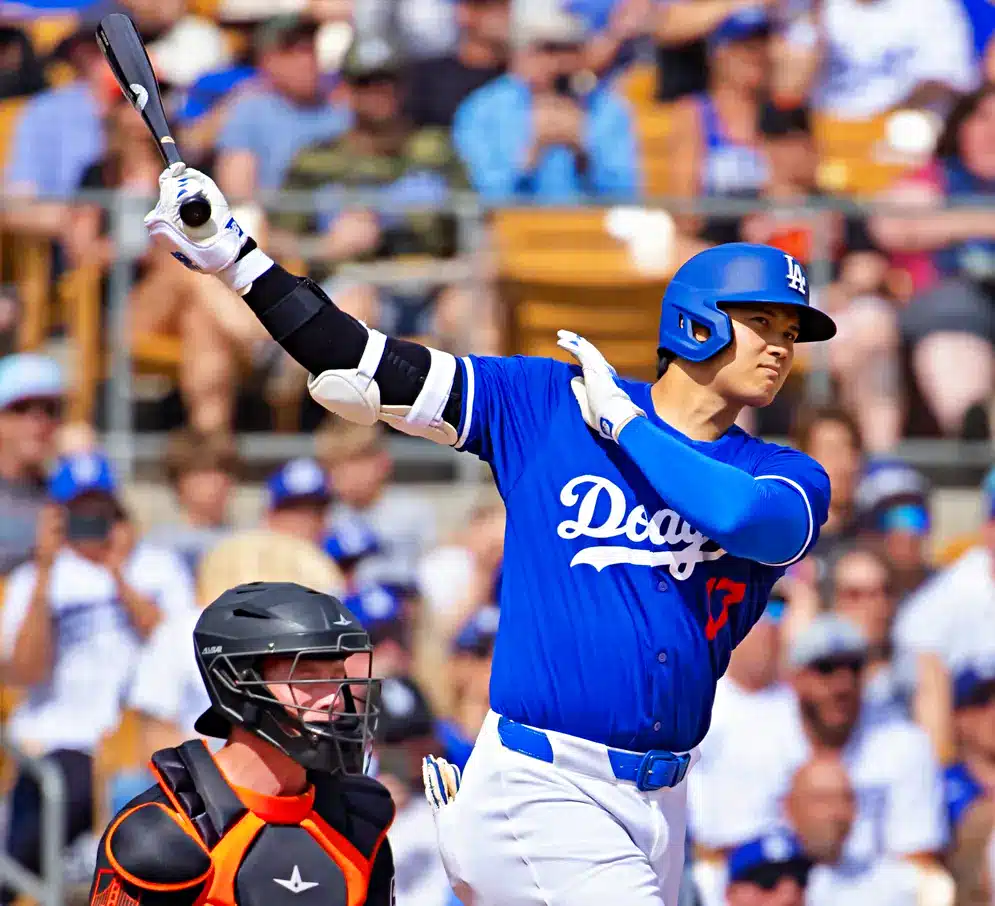
Major League Baseball will have one of its largest groups of Japanese import players ever – ten – to begin the 2024 season, and the storylines abound.
The most-watched player in the game will be Shohei Othani in his first year with the Los Angeles Dodgers. And not merely because of his season for the ages that earned him the 2023 American League Most Valuable Player Award. There is his unprecedented $700 million contract, huge expectations for him and the Dodgers, and uncertainty about how well he will pitch next season after his second Tommy John surgery.
Then there are the questions surrounding the firing of his long-time interpreter and friend, Ippei Mizuhara, after it was revealed that Mizuhara had accrued $4.5 million in gambling debts. Did Ohtani cover the debts, or was this the “massive theft” that Ohtani’s team has claimed? Or something else? And what will be the fallout? Only time will tell.
But Ohtani’s is not the only story. Will Dodgers pitcher Yoshinobu Yamamoto (the greatest Japanese pitcher ever?) fulfill the expectations generated by his sterling resume from Japan and massive $325 million contract? Can lefthander Yusei Kikuchi of the Toronto Blue Jays take another step forward after posting promising results in 2023? Outfielders Seiya Suzuki of the Chicago Cubs and Masataka Yoshida of the Boston Red Sox had both good and bad stretches in 2023 – which versions of these players will show up in 2024?
What will be the effects of the shoulder strain suffered in spring training by New York Mets starter Kodai Senga? He had a strong season in 2023 and will be key if the Mets are to rebound from a very disappointing year. The same goes for San Diego starter Yu Darvish, who had off-season elbow surgery and must come back strong if the Padres are to erase the memories of their failure to make the playoffs a year ago.
Elsewhere, starter Kenta Maeda is beginning anew with the Detroit Tigers, and there are the newcomers in addition to Yamamoto – starter Shota Imanaga of the Cubs and reliever Yuki Matsui of the Padres. How well will they adjust to the MLB game?
Let’s go into more detail.
Shohei Ohtani
From the on-field standpoint, what can one say about Ohtani that hasn’t already been said?
Nothing, really. So, to repeat . . .
Ohtani’s 2023 season was outstanding, if clouded by the elbow injury and subsequent surgery that will prevent him from pitching in 2024. He batted .304 for the Los Angeles Angels in 2023, led both leagues in slugging percentage, and topped the American League in home runs and on-base percentage. He was 10-5 on the mound with a 3.14 ERA and low 1.06 WHIP. He struck out 167 batters and gave up just 85 hits in 132 innings.
His Wins Above Replacement (WAR), as figured by Baseball Reference, was 10.0 in just 135 games played. That’s the fewest games played in a 10-WAR season in MLB history, excluding full-time pitchers. He won his second Most Valuable Player Award despite missing the Angels’ last 25 games — the largest number missed at the end of a season by an eventual MVP.
Ohtani had the most popular jersey in MLB in 2023 and despite long-standing tensions between Korea and Japan, was quite popular among Korean fans when the Dodgers played the Padres in Seoul to open the season. He even recently revealed his own personal logo with New Balance.
He should be a huge force in a loaded roster that also includes his countryman, Yamamato – more on him later.
In spring training, Ohtani posted a .393 batting average with an OPS of 1.214, and he began the regular season by going 3-10 with a couple of RBIs in the two-game opening series against the Padres in Seoul, South Korea.
Though he won’t pitch in 2024, he began a throwing regimen in late March and expects to be ready for game action in 2025.
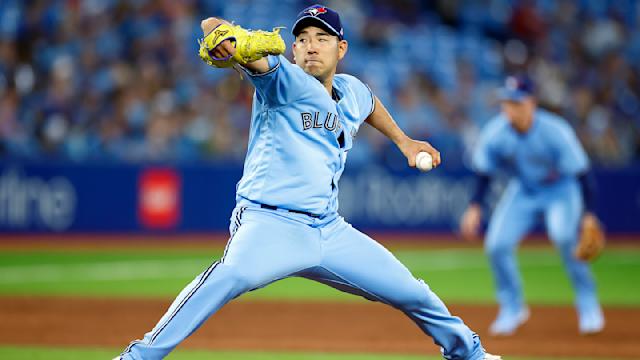
Yusei Kikuchi
Kikuchi had bouts of inconsistency in 2023, his first season with Toronto, but his overall performance represented a step forward.
In his first four seasons in MLB, Kikuchi had not been able to harness his elite stuff, posting a 5.02 ERA. By the end of the 2023 regular season, however, he was 9-4 with a 3.63 ERA and 1.27 WHIP, the latter significantly lower than his career mark of 1.38. In addition, he had an average walk rate of 2.59 per nine innings, compared to his career mark of 3.39 and the prior season’s bloated 5.19.
Kikuchi will need to be consistent in 2024 for the Blue Jays to have a shot at again reaching the postseason. A year ago, he developed a curve to complement his fastball and slider. This spring, he worked on improving his fastball command and replacing his former split-finger changeup with a circle change. The idea is to reduce the changeup’s velocity so there will be a bigger gap between that and the speed of his fastball.
“[The changeup is] a lot like his curveball paired with his slider to where it’s just that good speed difference between the two, and it keeps hitters in between,” Blue Jays Manager John Schneider said. “The slider and fastball are hard, and the changeup and curve are a little bit slower. Whenever you can keep hitters in between a little bit, it’s a good thing.”
Spring training results, of course, can mean everything, nothing, or anything in between, so one should always take a wait-and-see attitude. That can be particularly true of veteran pitchers, who are often more focused on refining their stuff and rounding into shape than statistical performances. For the record, though, Kikuchi had a rough spring, with a 16.43 ERA, a 2.48 WHIP, and twice as many hits allowed as innings pitched.
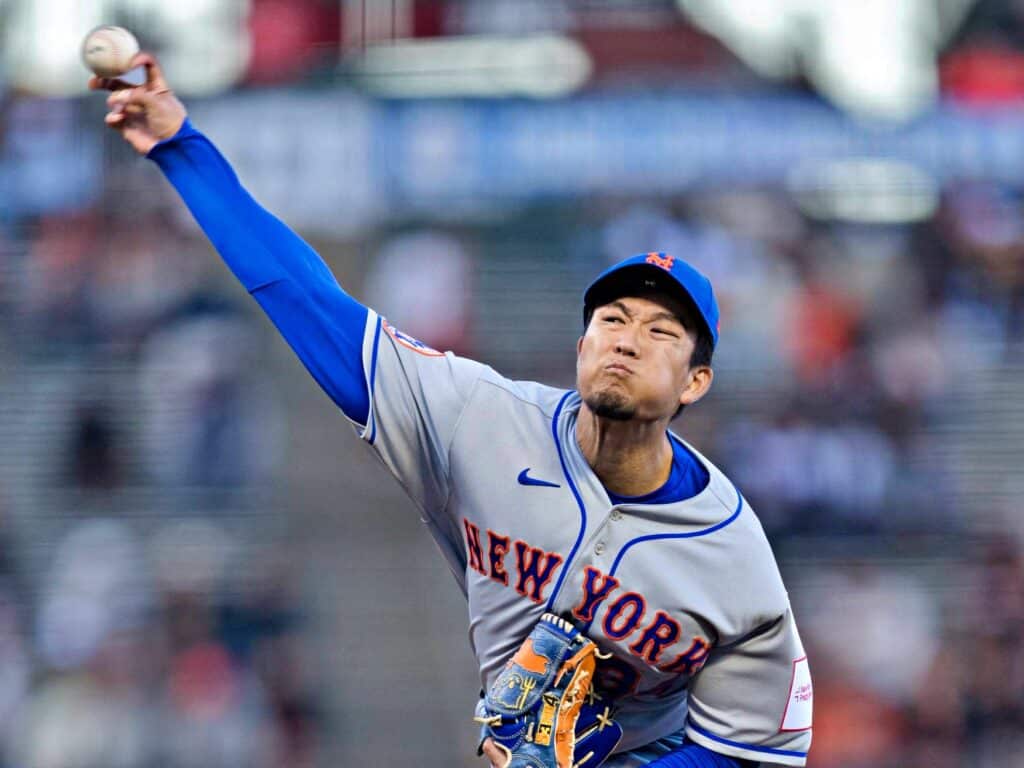
Kodai Senga
Senga had a good first season in MLB, but he suffered a setback early in spring training when he was diagnosed with a moderate right posterior capsule strain and received a platelet-rich plasma (PRP) injection. On March 21, the Mets announced that an MRI on Senga’s right shoulder revealed no issues. Once he passes a series of internal strength tests, he should be able to restart his throwing program. The prediction at the time was that it would take him at least six weeks to ramp up for the regular season, so look for him in mid-May or perhaps later.
Clearly, the Mets need a healthy Senga in the rotation if they are to improve on last season’s massively disappointing result. In the first of a five-year, $75 million deal, Senga posted a 2.98 ERA with 202 strikeouts in 166 1/3 innings. He was named an All-Star, placed second in the National League Rookie of the Year voting, and finished seventh in NL Cy Young voting.
As expected, he endured a period of adjustment but got better as the season progressed. During much of the season, he had problems with his command and with getting behind in counts but improved in the latter stages of the campaign. From April through July, he averaged 4.6 walks per nine innings. He lowered that to an average of 3.52 over August/September. Senga posted a very low 2.10 earned-run mark in September. Overall, he ranked second in the National League ERA standings and tied for eighth in strikeouts.

Seiya Suzuki
Suzuki essentially had two seasons in 2023, his second with the Cubs. In the first half, he posted a middling .748 OPS; In the second half, that figure was a robust .938. The Cubs, obviously, hope the second-half version is what they’ll get in 2024. They’ll need that to happen if they hope to get into the playoffs, which they just missed last year.
To be fair, Suzuki missed most of the 2023 spring training and also the first two weeks of the season with a left oblique strain, and it took him a while to get going. He posted a .207/.268/.307 slash line between June 15 and August 7, but he surged after that, finishing August with a .321 average and 1.006 OPS and posting marks of .370 and 1.019 in September. In the last month of the campaign, he hit seven home runs, drove in 26 runs, had 11 multi-hit games, and went hitless in just five games. Eighteen of his 40 hits during September were for extra bases.
Overall in the regular season, he batted .285 with 20 home runs, 74 RBIs, and an .842 OPS. The 2023 season was one in which Suzuki made significant strides toward being the hitter he was during his nine seasons in Japan’s Nippon Professional Baseball (NPB). Seemingly, he carried that over into spring training, during which he batted .459 with six home runs and a huge 1.593 OPS.
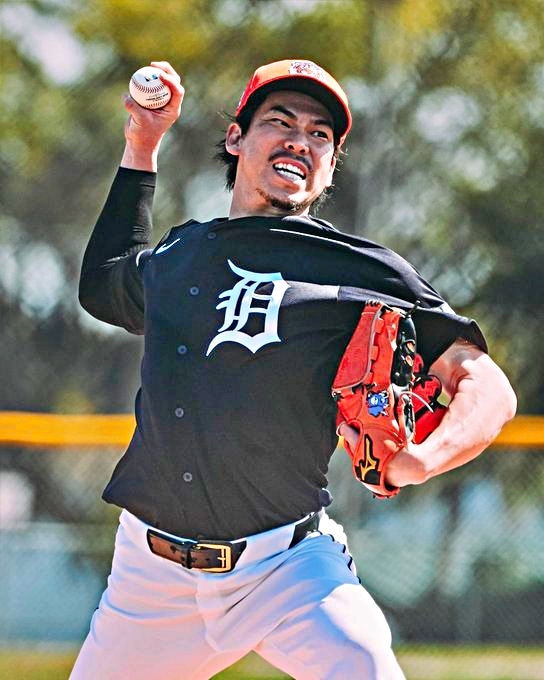
Kenta Maeda
The 35-year-old Maeda signed a two-year, $24 million deal with Detroit in the off-season. The Tigers, who finished second in the weak American League Central Division with a 78-84 record, need him to be the pitcher he was in the second half of the season if they are to contend for the division title.
Maeda had a difficult beginning to 2023 – his first season after undergoing Tommy John surgery in September 2021 – but he came back and helped the Twins win the division. In his final 17 appearances, Maeda posted a 3.36 ERA, struck out 29 percent of batters, and walked just seven percent. His velocity returned to pre-surgery levels, and his command gradually improved. Maeda was 3-1 with a 2.81 earned-run mark and just a 1.05 WHIP in the September stretch run.
For the season, he was 6-8 with a 4.23 ERA, but that included an April when he was 0-4 with a 9.00 ERA before going on the Injured List. He struck out an average of 10.1 hitters per nine innings.
Maeda features an outstanding splitter, and the hope is that his slider will improve in his second season back after the Tommy John surgery.
“I don’t think we were focused on specific weapons,” Tigers’ President of Baseball Operations Scott Harris said at the time of the signing, “[but] splits have a lot of things going for them. They’re generally platoon-neutral pitches. They are effective against righties and lefties. A lot of the best ones have very late movement that deceive hitters. And, pitchers like Maeda can vary the shape of them, can throw them for both strikes and for chase pitches.”
Maeda was 2-1 this spring with a 5.82 ERA in 17 innings.
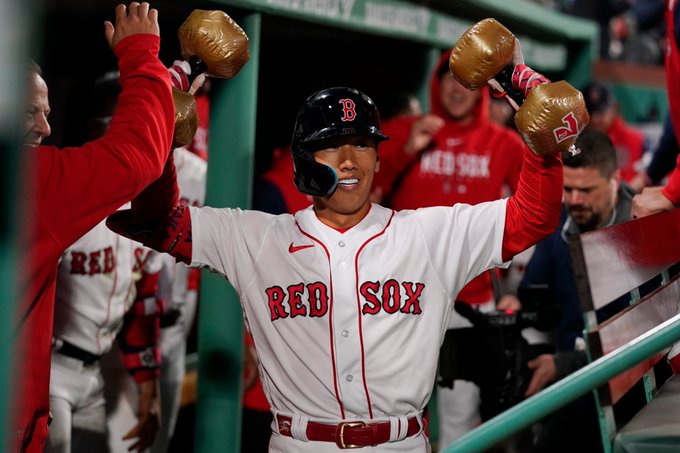
Masataka Yoshida
In his first MLB season with Boston, Yoshida fell off in August and September. After batting .314 in July, he hit just .261 with a .281 on-base percentage and .359 slugging mark in August and followed that by slashing .250/.268/.388 in September. He was hitless in 10 games in the season’s final month.
In a mid-September posting, The Athletic noted that Yoshida produced only an 0.7 fWAR, has “been one of the worst defensive outfielders in baseball this year and hasn’t held up his offensive performance after an early-season hitting streak . . .”
Yoshida’s late-season dropoff was in part because of a lack of stamina. Now, with a better knowledge of how to prepare for the travel and stresses of the long MLB season – and without the added load of playing in the World Baseball Classic – Yoshida should be better prepared.
“Time [zone] difference[s], that was something that I didn’t get to experience in Japan,” Yoshida said. “So that was something new to me. And in Japan, we take public transportation, and charter and take a private plane. So that was something different, too. And sometimes, after the game, we’d hop on the plane and get back to Boston in the early morning, so that was something new as well.”
He is expected to get more time in the designated-hitter role this season, as last year’s DH, Justin Turner, is now with Toronto, and the Red Sox want to get more athletic in the outfield.
Yoshida has four years remaining on the five-year, $90 million contract Boston gave him last off-season, so he still has time to prove himself. And it can take time to adjust to the MLB game and its longer season; His countryman Suzuki went through a similar adjustment period in 2022.
Suzuki batted .271 with an .824 OPS, and he finished strongly with six hits in his final 11 at bats.

Yu Darvish
Like the Padres, who failed to make the playoffs despite a talent-laden lineup, Darvish did not live up to expectations in 2023, particularly in the light of the $108 million contract extension he signed earlier in the year. And he didn’t pitch after August 28 because of what was called right elbow inflammation. Darvish later said that he’d suffered a stress reaction in his right elbow, though not a stress fracture, and eventually underwent a minimally-invasive arthroscopic debridement. He called the injury “pretty similar” to the one he incurred while pitching for the Cubs in 2018. He underwent surgery that September and was ready to return for the start of the 2019 season. For the record, Darvish also had Tommy John surgery in 2015 and missed that entire season.
Darvish finished the season with an 8-10 mark, a 4.56 ERA, and a 1.30 WHIP. The latter mark is his highest since the 2018 season and the second-highest of his 11-year MLB career.
Darvish apparently is healthy and ready to in 2024, however. He began the spring by pitching two scoreless innings and striking out three batters against Kansas City and finished the spring with a 2.89 ERA and 1.07 WHIP.
He then started the season opener against the Dodgers on March 20 and went 3.2 innings, allowing two hits and no earned runs while striking out three and walking three. His pitch count was a bit high, at 72. His next scheduled start is March 28 against the San Francisco Giants.
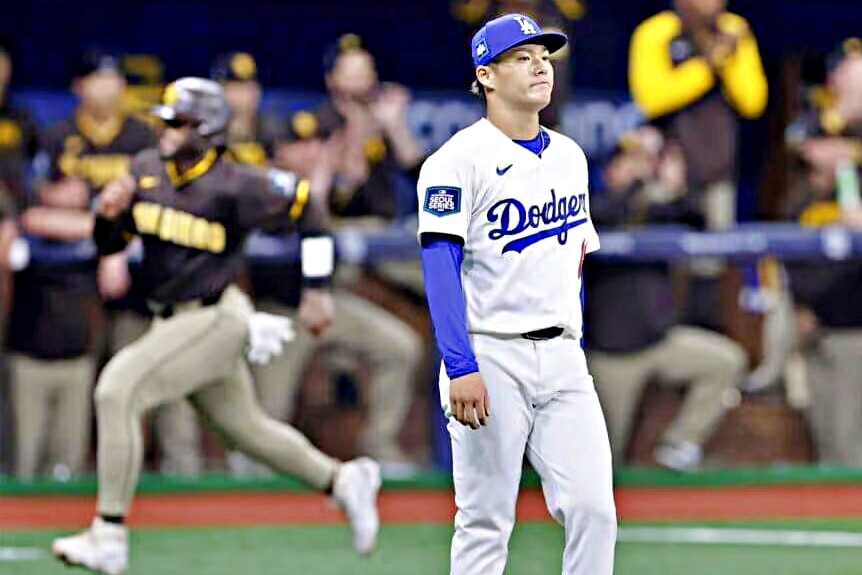
Yoshinobu Yamamoto
The Dodgers signed Yamamoto to a 12-year, $325 million contract in the hope that he can co-anchor their rotation, along with fellow countryman Ohtani, for years to come. Since he’s just 25 years old, there is a better-than-average chance that he can be effective for most of the length of his contract.
Like many import players, though, he may have a transition period. In spring training, he had an 8.38 earned-run mark and 1.97 WHIP, though he did strike out 14 batters in 9.2 innings. Yamamoto also had a rough first outing when the Dodgers played San Diego in the second of the two games in Seoul. He lasted just one inning and made 43 pitches, giving up five runs, four hits, and a walk. He also a hit batter.
The Athletic noted that he is the same age Darvish and Masahiro Tanaka were when they came over from Japan and “figures to face some of the same obstacles that Darvish and Tanaka dealt with, adapting from everything to the schedule to the slipperiness of the baseball to the quality of the opposition to the length of the season. ‘Late-season fatigue is a fair concern,” one scout said. Yamamoto, another scout said, is the ‘biggest wild card of 2024, with No. 1 stuff. How quick can he adjust?’”
But scouts, in general, think he’ll be able to make the adjustment to MLB, and this article delves into the “why.” He also has some interesting and unusual training methods, highlighted by his javelin-throwing regimen.
Certainly, his pedigree to this point is sterling. In seven seasons with NPB’s Orix Buffaloes, Yamamoto had a 70-29 win/loss mark with a minuscule 1.82 earned-run average and a very low WHIP of 0.935. He averaged 9.3 strikeouts and just 2.1 bases on balls per nine innings. He also only allowed an average of 0.4 home runs per nine innings. He won both the Pacific League Most Valuable Player Award and the Eiji Sawamura Award – the NPB equivalent of the Cy Young Award – in three consecutive seasons. In 2023, he was 16-6, had a 1.21 ERA, and struck out 169 batters in 164 innings.
Listed at just 5-10 and 176 pounds, he nonetheless has very good velocity on his fastball – his four-seamer averaged 95.1 mph in 2023, higher than that of the average MLB starter (93.5). In addition, his fastball has very good movement. He also has an excellent splitter, along with a curve, cutter, sinker, and slider. His curve may be one area of some concern.
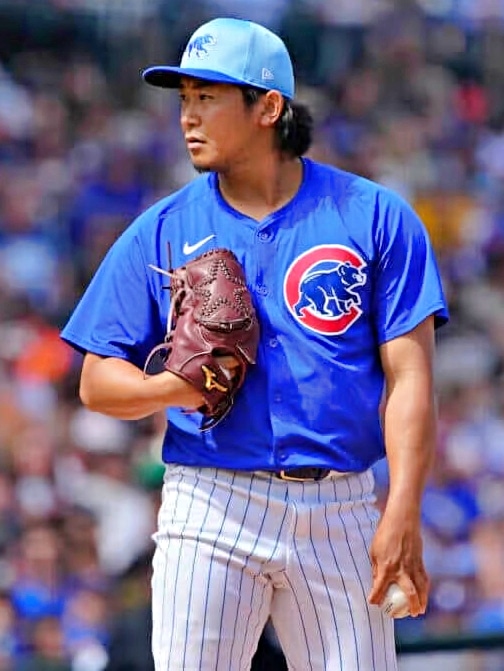
Shōta Imanaga
Imanaga was overshadowed by Yamamoto in free agency, but he could give the Cubs’ rotation a significant boost with offerings that include a low-to-mid-90s fastball, splitter, slider, and curve. The 30-year-old signed a four-year contract that, per a source, guarantees $53 million over four seasons. After the 2025 and 2026 seasons, Chicago will have the option to extend the deal to five years ($80 million total). If the deal is not extended in either offseason, Imanaga will have the right to elect free agency. The Cubs also paid a posting fee of approximately $10 million.
Here again is the question of how well and quickly the player will make the adjustment to MLB. Even in early live batting practice sessions, the Imanaga realized how quickly hitters could adjust from at-bat to at-bat, and he’s also learning how to change the way he uses his fastball, especially up in the zone. He was 2-2 with a 5.68 earned-run average in the spring, but he did strike out 25 batters in 12.2 innings and walked just three.
Imanaga pitched for the Yokohama DeNA Baystars of Nippon Professional Baseball in 2023, putting up a 7-4 mark with a 2.80 ERA in 22 games. He struck out a league-leading 174 batters in 148 innings. During his eight NPB seasons, he posted a 64-50 mark, had a 3.18 ERA in 1,002 2/3 innings, and averaged 2.5 walks per nine innings. In his two most recent seasons, he pitched to a 2.53 ERA and struck out 306 batters.
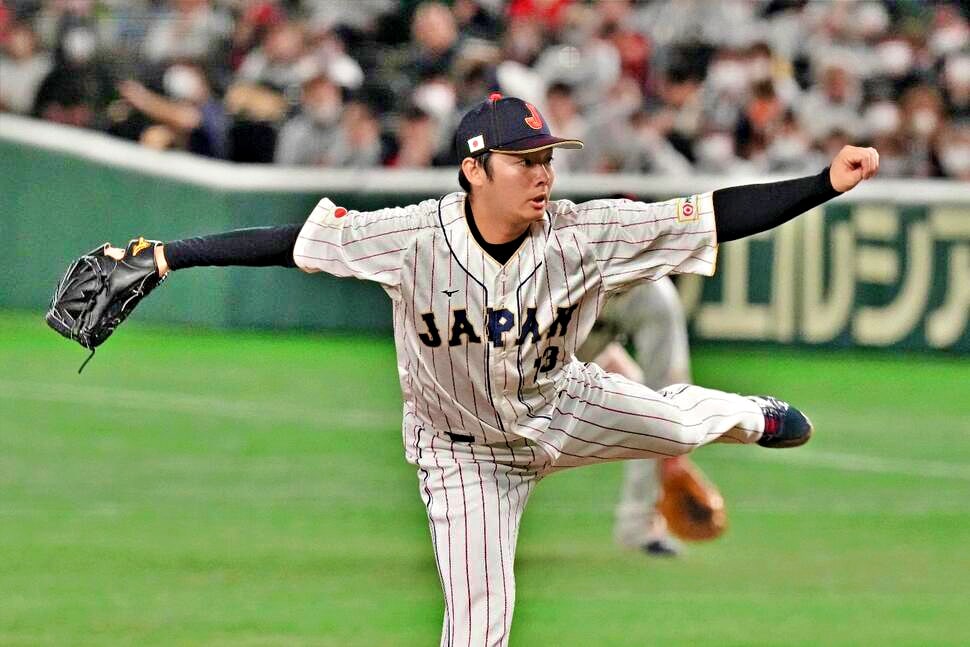
Yuki Matsui
Matsui, a 28-year-old lefthanded reliever, signed a five-year, $28 million contract with the Padres. He was an unrestricted international free agent, so the Padres didn’t have to pay a posting fee or give up draft compensation.
He missed much of spring training with back issues, throwing only three innings, but he struck out eight batters in that time. He also appeared in both games against the Dodgers in Seoul, giving up a couple of hits, striking out one, and walking one over 1.1 innings. Though he was a closer in Japan, he’ll begin in setup situations with the Padres while he adjusts to MLB.
The 5-foot-9 Matsui throws a splitter, slider, and 4-seam fastball with good carry. His fastball is said to average 92-94 miles per hour and top out at 96. When he was 16 years old, he struck out 22 batters – including a record 10 in succession – in a high school tournament game. Matsui’s repertoire profiles well when evaluated through pitch metrics, which provides greater confidence in his ability to transition to MLB. He’s maintaining a strikeout-to-walk ratio of 6.7 this season, an improvement over his 2022 numbers. Matsui profiles as a seventh-inning reliever, and possibly better, in a Major League bullpen next year.
In his NPB career with the Tohoku Rakuten Golden Eagles, he had a 2.56 ERA, averaged 11.7 strikeouts per nine innings, and had 236 saves and 68 holds in 447 appearances.
Interestingly, he pitched just one inning in last year’s World Baseball Classic and had problems with command while using the official MLB ball, which is slicker and a bit larger than the one used in NPB, but he’s been adjusting during spring training.
“If you try to throw this ball the same way you threw that one, it’s tough. But once you realize this is the ball you are working with, you can narrow your focus,” Matsui said.
He has also noticed that his fastball has more cut with the MLB ball – away from lefthanded hitters and in on righthanders. “And it’s easier to throw breaking pitches, get better spin on the ball. In Japan, I think I had better movement on my fastball. It just felt lighter.”
NOTES: Another import was righthanded starter Naoyuki Uwasawa, who signed a minor-league contract with the Tampa Bay Rays after nine seasons with the NPB’s Nippon Ham Fighters. He struggled in his three spring-training outings, but did well in his fourth and fifth. He was reassigned to minor-league camp but may reappear at some point. The Rays would view him as piece of their rotation depth if he chooses to remain in the organization. “We anticipated there would be some challenges, but he made a nice adjustment and really got the [splitter] going. [His last] outing, everybody was encouraged by,” Manager Kevin Cash said. “He threw some splits that dropped and looked like curveballs. So that pitch is a pitch that I know him and [pitching coach Kyle Snyder] worked hard on maybe altering the grip a little bit, and it seems to have taken off.” Uwasawa, who has trained at Driveline, posted a 70-62 record in NPB, with a 3.19 earned-run mark and 1.18 WHIP. He averaged 7.3 strikeouts and 3.1 walks per nine innings. He was 9-9 with a 2.96 ERA and 1.13 WHIP in 2023. His best season statistically was 2021 when he was 12-6 with a 2.81 ERA and 1.04 WHIP . . . Mets reliever Shintaro Fujinami was another late demotion. Signed to a one-year, $3.35 million contract after an inconsistent first year in MLB, Fujinami struggled harness his elite stuff in spring training – a long-standing problem. In the spring, he allowed five earned runs on four hits and four walks while striking out five over 3.2 innings. A year ago, he walked an average of 5.1 batters per nine innings, posting a 7-8 mark, 7.18 ERA and 1.49 WHIP. Still, teams will take chances on pitchers who can record triple-digits regularly with their fastballs, and Fujinami hit as high as 102.6 on the radar gun in 2023. Reportedly, he threw more 100-mph fastballs in 2023 than all but eight MLB pitchers . . . Prior to the season, 67 Japanese imports had played in at least one MLB game. This year’s newcomers will add to that total . . . An interesting aside to Yamamoto’s contract with the Dodgers is that it includes a full-time interpreter, personal trainer and physical therapist. Yamamoto gets a hotel suite on road trips and five round-trip airline tickets each year. And he cannot be sent to the minor leagues without his consent . . . To reiterate from late last season: A good story to follow will be that of Rintaro Sasaski, the outstanding Japanese high-school hitter who announced that he will forego the Nippon Professional Baseball draft in favor of playing at Stanford University in the United States. The 6-0. 250-pounder was rumored to possibly be the top choice in the NPB draft, in part because of his Japanese-record 140 high-school home runs and also because he had more than twice as many walks as strikeouts. He will be eligible for the Major League Baseball Draft in three seasons. Had he entered the NPB draft, he would have needed to wait for his Nippon Professional Baseball team to either post him or wait until he became a free agent after nine years of service time. Interestingly, Ohtani and Kikuchi attended the same high school – Hanamaki Higashi – as Sasaki, and Sasaki’s father was Ohtani’s high-school coach . . . Looking back, check out one observer’s take on Sept. 21, 2023 about Japanese players who were candidates for coming to MLB soon. Of the six the author listed, four – Yamamoto, Imanaga, Matsui, and Uwasawa – made the move. The two who did not were starting pitchers Kona Takahashi of the Saitama Seibu Lions and Masahiro Tanaka, the former New York Yankee who last performed with the Rakuten Golden Eagles. Reportedly, the 27-year-old Takahashi wanted to be posted but the Lions did not allow it. Tanaka, 35, underwent arthroscopic surgery in late October to clean up his right elbow, and he re-signed with Rakuten on a one-year contract for $1.77 million plus incentives.